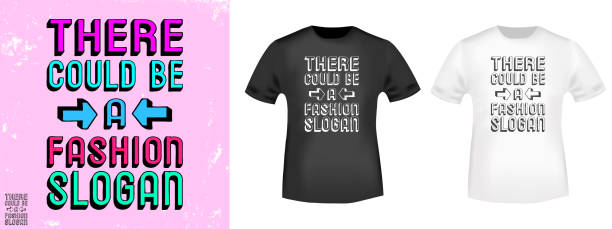T-shirt companies dominate the fashion industry. Independent labels have grown tenfold in recent years as consumers look for exclusive and unique tees. Social media has played a major role in popularising t-shirt labels and highlighting this niche. Customized and personalized T-shirts have become a current trend.
T-shirt companies dominate the fashion industry. Independent labels have grown tenfold in recent years as consumers look for exclusive and unique tees. Social media has been a major factor in popularizing t-shirt labels and highlighting this niche. Customized and personalized t-shirts are in demand, and independent t-shirt businesses have a bright future. This article will provide an overview of how to set up a t-shirt business if you’ve been considering it.
How to Start a T-Shirt Business
You can follow the steps below to start a T-shirt business:
Step 1: Find your niche. Find your niche
What type of t-shirts do you want to create? What brands are you drawn to? What is your reason for starting a T-shirt business? Asking yourself these questions is a good idea before you start.
Step 2. Step 2.
You can focus your marketing dollars on a market that will be more likely to purchase from you. This is an affordable, efficient, and effective way to reach out to potential customers.
Step 3. Step 3.
You can either create your designs or hire a designer. Funny Men’s T-shirts have become very popular in recent years. Explore the latest design trends in this category to get your creative juices flowing.
Step 4. Step 4.
If you want to produce a garment that is of high quality, then you should work with a reputable manufacturer. T-shirt production is faster and more automated than other garments. It does not require complicated patterns. You can achieve larger orders in a shorter time frame.
Step 5. Step 5.
Selecting a t-shirt material is no longer as simple as it used to be. Sustainable options include organic cotton, bamboo, Jute, and Tencel. Each has many qualities, including breathability and wrinkle resistance.
Also, it is important to know that some materials are better suited for certain embroidery or printing techniques. It is important to ensure that the t-shirt hangs/drapes well. Before committing to a fabric, it is vital to sample.
Consider where you get your materials from, as it will determine their availability over time. Avoid brands that change the fabric used to make their t-shirts.
Step 6. Step 6.
Screen Printing
This method is very popular and gives a good finish.
Pros:
Bulk orders are relatively cost-effective
* Creates impressive designs
* Screens are reusable
Compatible with most fabrics
The designs are durable
Cons:
The messy method
* Requires a large space
* Unsuitable for complex, multi-color designs
Direct to Garment (DTG) printing
The process is similar to paper printing at the office. A quality textile printer with ink is used. Like paper printing, your designs are loaded into the computer and then fed to the printer, which prints them on the shirt.
Pros:
* Prints multi-color designs that are complex.
* Super-fast
The DTG printers are compact and, therefore, save space.
No mess
* Smooth and soft prints
Cons:
* Only suitable for cotton T-shirts
DTG machines can be expensive
Dye Sublimation
This method works best on light fabrics, especially when you need to print large designs. The dye sublimation process is expensive, but the resultant design has a very high resolution and looks clear.
Pros:
The fabrics are super soft and smooth.
* Breathable prints
Prints that are durable and won’t peel, fade or crack
Cons:
It isn’t easy to dye creases and folds, such as armpit areas
Only works on polyester fabrics
* Quite expensive
Heat Press Printing
Heat printing involves using a special type of paper to create your designs. The designs are then transferred to the T-shirt by applying heat and pressure. Vinyl is usually used for the transfer paper. It has an adhesive side and a peelable tape on its other side.
Pros:
Simple and easy to understand
* Produces excellent quality
* Ideal for complex designs
Cons:
* Faster than all other methods
* Unfit for heat-sensitive fabrics
* Unfit for dark garments
Heat Transfer Vinyl
The fabric is then transferred using a heat-pressing machine or iron box. You will need a machine called the Cricut to cut out shapes. Heat transfer vinyl can be used for small graphics or slogans.
Pros:
* Long-lasting Results
It is easy to do
Cons:
* Not suitable for huge orders
Use caution when using fabrics sensitive to heat.
Step 7. Step 7.
A tech pack is an assortment of specification sheets that provide the blueprint for your design. This is an important tool for garment product development. It provides information to the factory to produce your design exactly how you intended. A tech pack, when done correctly, can save you a lot of money and time in both production and sampling.
Step 8. Decide on minimum order quantities
Digital printing has made it possible for small businesses to print small batches of products at once. Print-on-demand and dropshipping allow you to print your garments when you are ready to sell them. This method is more expensive but allows small businesses to test the waters before they commit to large orders.
Step 9. Step 9.
Are you planning to sell your T-shirts in a physical shop, online, or both? It would be best if you researched both funnels, as they have different benefits and challenges.
Step 10. Step 10.
For organic growth to occur, you need a product that is strong and about which people are positive.
You’ll want to create a group that is willing to promote your brand of t-shirts in their communities.




